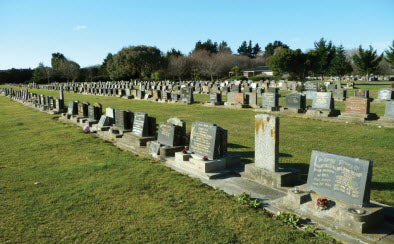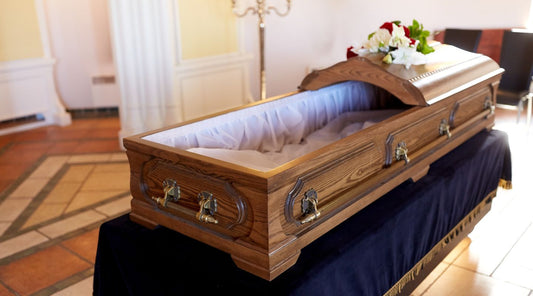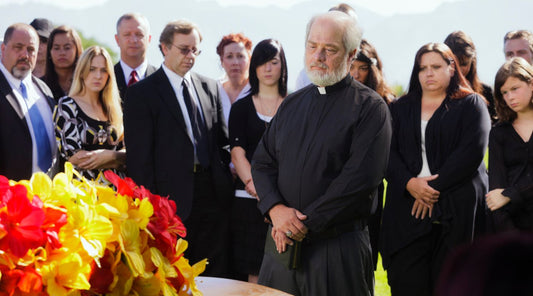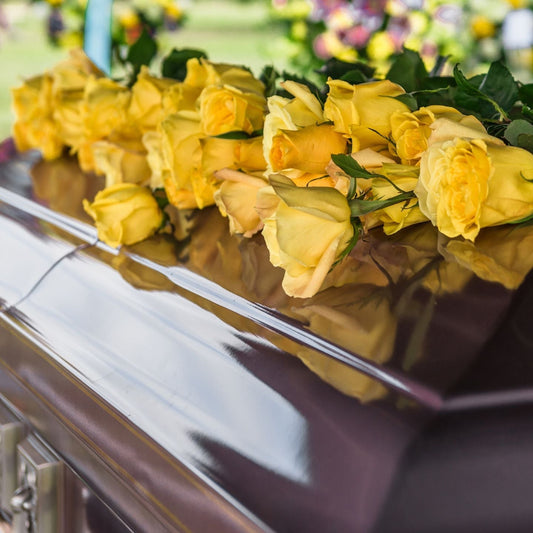
Do the Graves Always Face East? A Complete Guide on Which Direction Caskets Are Buried!
tThe tradition of placing the casket/shroud covered body in the grave with the head to the west is common, and people know about it. At the same time, the feet are to the east. The body would be placed face up.
In all fairness, it’s not very practical to utilize the west-east placement all the time, which is why the north-south placement turned out to be a great alternative. This time, the funeral casket was placed on the side, head to north, and face to east. Suffice to say, not all cemeteries and traditions allowed the position either.
Why caused the east-facing position?

One may think that it’s for practical reasons, but the east-facing placement has religious causes. It seems that in Christianity, the star comes from the east.
Some of the ancient religions (based on the sun) would bury the dead facing east so that they could face the "new day" and the "rising sun." Once again, Christ is considered to be the "Light of the World," which explains the eastward facing burials. Many scriptural talks about the resurrection and how Christ will come from the east. Lightning shows from the east, but it’s from the west that you can see it. It makes perfect sense that the Son of Man would arrive from the east.
It’s the main reason for which many churches put the altars facing east. Should you be curious enough, you can always grab a compass and see it for yourself. Going early in the morning or late in the afternoon will let you observe the sun’s position, without even utilizing a compass. You don’t want to be too obvious. When the West-east burial placement was utilized, all graves couldn't align with the real east. It's mostly because getting the right east was challenging to obtain. Even if the magnetic compass was available, not many people were using it per se. For example, the oldest graves from Virginia are almost never aligned to true east.
The possible cause for the misalignment is that it was challenging to establish east only by the position of the sun on the eastern horizon at sunrise. People may have sensed that they are using the east, but the compass would have proved otherwise.
How familiar were the facing east burials?
As the people moved westward toward the Indian lands, it became apparent that the need for gravesites would increase. Family farms would use the family ground for burial, and it was prevalent for the rural south, especially for the Cumberland and Appalachian regions. The next option was the local church, but it was difficult to establish the actual east as many people would choose the local cemetery.
Truth be told, people weren't accurate when choosing the placement of the grave, and it's not sure that they used the compass after burial either. It's beyond a doubt that they would use the sunrise for establishing east. Little that they know that the position would change every single day of the year.
Should you be curious enough to check the early land records, you would notice that there are many inadvertences between the legal descriptions and the real surveys. The declination is the leading cause for the difference, with the magnetic north being different from the true north.
Many years ago, the "meets and bounds" was the survey system, and it was no good at all. It goes without saying that nobody should rely on the old surveying methods when we have accurate modern surveying systems. Therefore, nine times out of ten, it was a person’s take and not science deciding the grave direction centuries ago.
The trustedcaskets.com is suggesting that some may have used west-east positioning of the graves in the city cemeteries. He also adds that it’s sure that not all cemeteries were built with the direction in mind.
One particular aspect refers to the position you're buried relates to one of the spouse. Typically, the husband is buried on the left, whereas the wife should be on the right, as you’re standing at their feet. The position isn’t ordinary, and it’s the same that couples have while they’re getting married. In some cemeteries, the tradition hasn’t disappeared, and it's the most common for couples.
Next time you go to a cemetery, you could take a look at the burials. Take a look to find out how many are facing east. See if the headstones of the husbands are on the left as you're standing in front of them.
Read also: In Loving Memory Quotes: How to Express Your Love & Support
Is there a rule about orientation in the Catholic religion?
There are no strict regulations about the position of burial in the Catholic religion, and the direct burial is also taking place time to time. The only thing that kind of regulates the funeral service is a reference in the Roman Ritual of 1950 (it’s not mandatory anymore) that recommended that the casket should be placed so that the feet of the body would always point toward the main altar. And the rule is only available during the funeral Mass.
If the church would be built so that the priest honoring Mass always faces the east, it makes perfect sense why the deceased would also face east throughout the funeral service.
The majority of churches today would honor Mass with the priest facing his parishioners across the alter. It’s related to the communal aspect of the Eucharist as a meal of devotees. Mass is provided with the priest and the parishioners facing east, which accentuates the sacrificial character of the Eucharist. Nevertheless, people will be buried facing the east, which relates to the Christian belief we’ve mentioned.
We may very well conclude that there is no strict rule, with some cemeteries presenting a massive plat with a cross in the middle. This way, all family members can be buried circularly, whereas their heads would be closer to the cross.
Are there any rules about the orientation in the Jewish tradition?
Should you check some of the complete works on Judaism, you will notice that no Jewish law demands the graves to face any specific direction. With people waiting for the ultimate redemption and the messianic era, some customs were born:
- The bodies would be buried with the feet oriented to the cemetery’s entry.. It was a symbol that the deceased was ready to leave the graveyard once the resurrection of the dead would begin.
- Once the resurrection would begin, all people would go to the Land of Israel, so it makes perfect sense that cemeteries would be set up so that the deceased's feet would face the direction that one should take when traveling to Israel. For a better understanding, people in Europe would be buried with the feet facing east, whereas in other parts of the world, the feed would face south. We should remind you that Israel is southeast of Eastern Europe, making it easier for people to go east to Turkey and then south. They could also first hit south to the Mediterranean and east afterward.
It’s why some cemeteries from Europe present entrances on the south and east side as well, whereas the deads are buried both ways.
Are there any rules on the direction of the grave in Islam?
Every dominant religion has its specific rites, and Islam makes no exception. There are particular rules about the style and custom of the grave, but the burial can vary from one region to another.
Having said that, we do need to highlight one rule. It’s expected for the grave to be perpendicular to the orientation of the Qibla (which is Mecca). When placed that way, the deceased in the tomb (without a casket) would sit on the right side, facing Qibla. The grave markers are raised, but not higher than 12 in above the grave. The idea is not to be able to walk on or sat on the grave.
Do Buddhists have burials at all?
The Buddhist funeral rites are many and various. However, it’s often that the funeral service happens with an altar to the deceased. Meditation and prayer can happen too, but the body will be cremated right after the service.
For those of you who don't know, Buddhist believe in reincarnation. Therefore, cremation is fundamental for liberating the soul from the physical form. There are no mandatory traditions in the case of Buddhist funerals, but there’s never a burial involved in Buddhist funerals.
Blog Author: Tim




